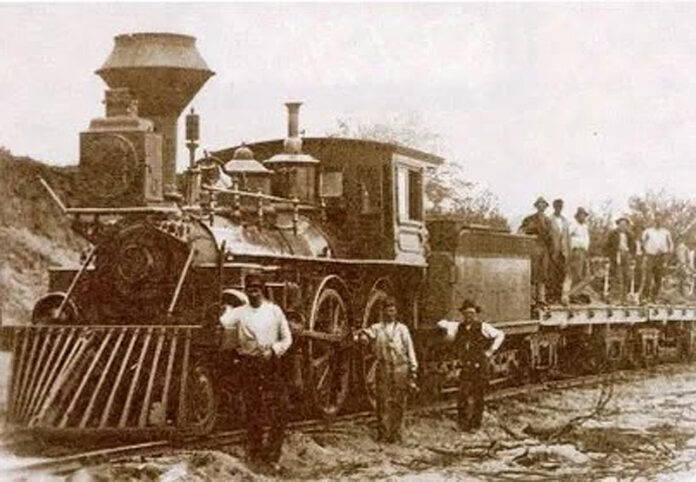
By Latanya West
Photos: CA State Archives and Creative Commons
California Secretary of State Alex Padilla announced this week that the California State Archives has released its latest digital exhibit, “Making the Grade: California and the Transcontinental Railroad,” to commemorate the 150th Anniversary of the completion of the Transcontinental Railroad on May 10, 1869. The railroad connected the East and West Coasts of American and helped California become the powerhouse state it is today.
Before the First transatlantic railroad, people made a dangerous path to the West Coast, travelling by horse, ox, or feet from the Eastern and Southern parts of the country.
“The completion of the Transcontinental Railroad in 1869 was a transformative event in California history,” said Secretary of State Alex Padilla. “The completion of the railroad connected California with the rest of the country, helping to propel the Golden State to its status as one of the nation’s key economic engines.”
It’s one of eighteenth online exhibits that allow the public to explore high-resolution images of California’s State Archive in a partnership with Google Arts & Culture. Launched in 2016 by Google’s Cultural Institute, Google Arts & Culture is the tech giant’s contribution to the cultural-social landscape, giving viewers an immersive, digitized experience where they can discover and share millions of artwork, historical sites, and stories.
The First Transatlantic Railroad was a major engineering accomplishment. Exhibit records, photos, and research tell the story behind the railroads construction, and documents the railroad’s impact on the history of the Golden State. There is mention of the contributions of the Chinese laborers, over 10,000 in number, who endured brutal working conditions. An impressive image of the Theodore Judah Map, a 66 foot long map considered to be the first complete rail map of the Sierra Nevada Mountains, is also featured.
African Americans factor into the story as well, though the exhibit doesn’t mention them. According to archival research from the University of Utah, the original eastern and western transcontinental railroad tracks joined at Promontory, Utah and Union Pacific employed nearly 300 African American railroaders there. Union Pacific Railroad later signed a contract with Pullman Palace Car Company for passenger train travel, which would provide stable employment for thousands of African Americans for decades.
Visitors can search historic California art work, prints, documents, and photographs by visiting https://artsandculture.google.com/. Search for “Making the Grade: California and the Transcontinental Railroad.” Other online exhibits include: “Allensworth: Realization and Resurrection of an African American Dream,” “The California Legislative Black Caucus: Celebrating the Past, Working Toward the Future,” and many more.


